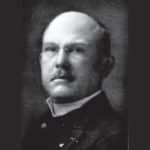Marketing Mix 4P explained

Marketing Mix 4P: this article explains the marketing mix 4P by E. Jerome McCarthy in a practical way. It covers what the marketing mix 4P is, how it is multi-usable, what the P’s are in more detail, what the basic elements of the marketing mix 4P are, and what criticism can be given to the model. It also provides an example to show the model in practice and you can find useful tips throughout the article. After reading you will understand the basics of this powerful marketing strategy tool.
What is the Marketing Mix 4P?
Organizations often wish to use the traditional marketing mix in order to deploy their marketing strategy as effectively as possible. In the 1960s, the American marketeer, E. Jerome McCarthy, provided a framework by means of the marketing mix: the 4 P’s.
The 4P ‘s include Price, Promotion, Product and Place. According to McCarthy, marketeers can draw up a good marketing plan and improve operating results visibly by using the right combination and variables. The 4 P’s are also know as the basic marketing mix.
Marketing mix 4 P’s are multi usable
McCarthy’s 4P ‘s are especially relevant in the marketing of consumer goods (B2C), such as supermarket products or durable goods like white goods and cars.
Nevertheless, the marketingmix (4 P’s) are also used for B2B marketing. For example, stationery supplies for companies, in which the 4P ‘s are used in the best possible way. However, it is a fact that the 4 P’s mainly target the sales of products and apply to the sales of services to a lesser extent.
As the terms product, price, place and promotion also start with the letter ‘P’ in many languages, the marketing mix (4 P’s) are known all over the world and they are therefore a much-used marketingmix model.

Figure 1 – The 4 P’s of the Marketing Mix Model by McCarthy
Product
This ´P´ is called the ‘product mix’. This applies to both physical products and services. Sometimes the product is split up into:
Physical product
The basic product. It is purely about the functional and aesthetic-al characteristics such as dimensions, function and life.
Extensive product
The physical product with added qualities such as packaging, brand name, service and guarantee.
Total product
The extensive product plus emotional, instrumental and expressive qualities and/or values that the consumers attach to this. The product is final for the short term. Changing the product by changing the packaging or new innovations, however, takes time.
Price
The price is an important factor for both the supplier and the consumer and is mainly determined by the proportional relationship between supply and demand. The price can be adjusted quickly, as a result of which this marketing instrument is frequently used. This involves costs.
In micro-economics these costs are referred to as menu costs; whenever a price increase has to be implemented this has to be changed on the menu card. A food example is a soft drink. The price in the supermarket differs hugely from the one that is paid in an outdoor café:
Product: 1 bottle of soft drink Price € 1.30 for 5 glasses. Promotion: – Place: supermarket
Product: 1 glass of soft drink Price: € 2.25 a glass. Promotion: – Place: outdoor café
Place
Place includes both the geographical location where the product is offered and the (type of) distribution channel. Shopping centres are places where commerce is dominant. Besides location, the place where the product can be found in the shop is also a relevant factor; suppliers pay to have their products placed at eye-level in supermarkets, at the outer ends of the aisles and at the cash register (bargains).
Distribution can be divided into direct and indirect distribution. Direct distribution means that the product is delivered directly from the supplier to the end user (insurance companies, outlet stores and sales through the Internet). Indirect distribution means that the product is sold to the end user by means of an intermediary such as a wholesale or retail business.
Promotion
All communication of a company that is aimed at stimulating sales comes under product promotion. Prodcut promotion is a broad concept and can therefore be divided into different sub-categories (promotion-mix):
Public relations
This is aimed at a good relation with public groups such as customers, competitors, suppliers and financiers.
Free publicity
This creates familiarity for instance by press releases and/ or by publishing favourable user reviews. Unfortunately, complaints made in public also come under free publicity.
Advertising
This is commercial non-personal communication aimed at large groups of consumers. Its main objective is to generate sales (e.g. advertising leaflets, radio and television commercials and bus shelter advertising).
Personal sales
An effective but expensive sales tool. During interactions with the customer any objection or preconception can be responded to. Personal sales bring about customer relations; a bond of trust is created with the customer.
Sales promotion
Here the emphasis is on price reduction such as 3 for 2, promotional price or a sale. The price reduction itself comes under the ‘P’ of price.
Cold calling
This is about approaching random or selected individuals or companies by telephone with the objective to sell products.
Planning
In the long term all four variables can be adjusted by marketeers. In the short term, however, the variables product and place/ distribution channel are difficult to influence and/or change. Within the marketing mix strategic long-term planning is very important, because it is only then that the product and the distribution channel can be adapted.
When marketeers want to change or adapt something within the marketing mix, they are almost forced to limit themselves to half their instruments. Therefore, they need to sell at record low prices and the consumer will be inundated with advertising.
The basic elements of the marketing mix 4ps
In addition to McCarthy’s 4 Ps, there are a few more things to consider when working in marketing.
Target market analysis
A company’s target market is the group of people it focuses on when selling products or services. It is important to know everything about this group before even creating a marketing plan, let alone a marketing strategy. There are several tools available for the target market analysis.
Demographic research includes research into factors such as age, education, and sex. Demographics aren’t the only way groups of people are analysed. Values, lifestyle aspects, and other psychographic aspects such as personality and attitudes are also valuable to marketers. By learning as much as possible about a specific target group, a marketer can personalise his strategy.
Reaching target audience
A crucial part of researching demographics is examining how the target audience communicates and how it exchanges information. To develop a highly personalised strategy, it is essential to understand how the target audience uses which type of communication media.
Differentiation
Once the target audience has been defined and researched, it is important to focus on the product side of this marketing mix. Read more about this in the toolshero-article about Value Proposition Canvas. What separates our product from other products? It is important to know what makes products unique, but also what makes the company itself unique.
A way of finding this out is to conduct research amongst existing customers. Ask them what makes the company unique. The information revealed will help understand what makes the company different from the rest.
Problem solving by customer service
Any organisation, where contact between customer and organisation is sometimes necessary, needs good and effective customer service. This is an integral part of almost all organisations.
From a marketing perspective, solving customer problems is crucial. This importance is growing, especially at a time when the influence of social media is very strong. From buying products to buying services, customer reviews often play a huge role.
Solving customer problems is the first step. It is also important that the feedback that is released during the customer contact is analysed. Analysing customer feedback allows a company to grow and adapt.
Marketers should take customer feedback seriously and investigate promptly to ensure a potential problem never recurs. If a problem is not resolved in a timely manner, it is possible that negative reviews will be shared on social media, which can affect the reputation of both the product and the company.
Collaborations
This last basic element is the most important and applies to all phases and activities of marketing. It is during collaborations, where employees come together to share their creative ideas and develop an effective marketing strategy. Additionally, planning is important.
These basic elements of marketing should enable a marketer to use McCarthy’s 4Ps to develop an engaged, unique and engaging strategy that helps a company differentiate their product or service from the rest of the market. These elements emphasise the importance of research and continuous processing of customer feedback.
A good marketing strategy must be constantly adapted to the consumer’s environment.
Marketing mix example of Coca Cola
Coca Cola is one of the leading brands in the soft drink industry. It is also the biggest non-alcoholic drink in the world. Coca Cola is sold in more than two hundred countries, so it can rightly be said that Coca Cola has been very successful in building an empire.
The popularity of soft drinks in general is declining due to today’s health trends. The soft drink giants are trying to respond to this. This is possible due to a very dynamic marketing department.
In addition to Coca Cola’s immense market share, it is also known for its high customer loyalty. Coca Cola invests a large sum of money every year to increase promotion and brand awareness.
The individual elements of the marketing mix in regard to Coca Cola are explained below.
Product
Coca Cola’s portfolio includes more than five hundred brands and more than four thousand different choices. The most important brand in the portfolio is the product Coca Cola. In addition, it includes more than 21 brands of which their value exceeded 1 billion in 2018.
A few choices from the Coca Cola assortment:
- Coca Cola
- Coca Cola Light
- Coca Cola Zero
- Sprite
- Fanta
- Minute Maid
Place
Coca Cola probably has one of the most comprehensive distribution systems in the world. The products are sold in more than two hundred countries, about 2 billion servings per day. Coca Cola relies on its partners for the packaging and distribution of its products.
The company produces and sells concentrated Coca Cola, beverage bases and syrups to companies that put it in a bottle; bottling. The partners then produce, package, trade, and distribute the products to the customers and other sales partners. These then sell the products to the consumer.
Price
The P in price or pricing strategy , in this context, stands for competition. Coca Cola’s biggest competitor is Pepsi. Both brands price their products competitively. The prices are not too high to not keep customers from the product, nor too low to not give the product an impression of low quality. External market developments such as health trends intensify competition between the two.
Promotion
Because of the competition in the soft drink sector, but also because of the potential profit margins to be made in the sector, top brands spend an extremely large amount of money on promotion in the form of advertising and sponsorship activities. Coca Cola’s total marketing spend in 2016 was nearly 4 billion dollars.
For the promotion of its product, Coca Cola uses both traditional and modern channels. They regularly launch global campaigns, such as Taste the Feeling, which unites all the brands under Coca Cola. This is different to how the brand promoted products in the past. It is possible that this is a consequence of changes in the market.
Next to advertisements on TV and billboards, the company also uses advertisement space on social media channels. These channels are used for both product promotion and branding.
Extension
Throughout the years the 4P ‘s of McCarthy have been adjusted and extended multiple times. Personnel are often mentioned as the fifth ‘P’. Personnel are the key players of an organization and without good personnel the other ‘P’s’ do not work well.
Periphery is also seen as an extra ´P´. By periphery is meant the external factors such as economical, technological and political factors that can have an influence on an organization. In addition Periphery can be cleverly deployed as a marketing means for instance by laying out an expensive canalside house as an office building to brush up its image.
The ´P´ of Partners is mentioned as an important aspect in marketing. By entering into partnerships, companies can benefit from one another and offer a more powerful concept.
Criticism on the marketing mix (4P ‘s)
Apart from the fact that the marketing is often used by organizations, McCarthy’s marketingmix model is also criticized, The marketing mix (4P ‘s) would only apply to the consumer market and would not emphasize B2B enough.
In addition, the marketing mix model would aim at products too much and would fail where service provision is concerned. It would be based too much on the perspective of the organization rather than on that of the consumer.
Notwithstanding the fact that companies want to sell their products, it is important to include the ideas of the consumers in the marketing concept.
Now It’s Your Turn
What do you think? Is the theory of the 4P marketing mix still applicable in today’s modern economy and marketing? Do you recognize the practical explanation or do you have additions? What are your success factors for a good 4P marketing mix set up or check?
Share your experience and knowledge in the comments box below.
More information
- Needham, Dave (1996). Business for Higher Awards. Heinemann.
- McCarthy, E. J. (1975). Basic Marketing: A Managerial Approach. Richard D. Irwin, Inc.
- Borden, Neil H. (1965). The Concept of the Marketing Mix. In Schwartz, George. Science in marketing. Wiley marketing series. Wiley. p. 286ff. Retrieved 2013-11-04.
How to cite this article:
Janse, B & Van Vliet, V. (2020). Marketing Mix 4P. Retrieved [insert date] from Toolshero: https://www.toolshero.com//marketing/marketing-mix-4p-mccarthy/
Published on: 07/12/2020 | Last update: 04/11/2023
Add a link to this page on your website:
<a href=”https://www.toolshero.com/marketing/marketing-mix-4p-mccarthy/”>Toolshero: Marketing Mix 4P</a>












